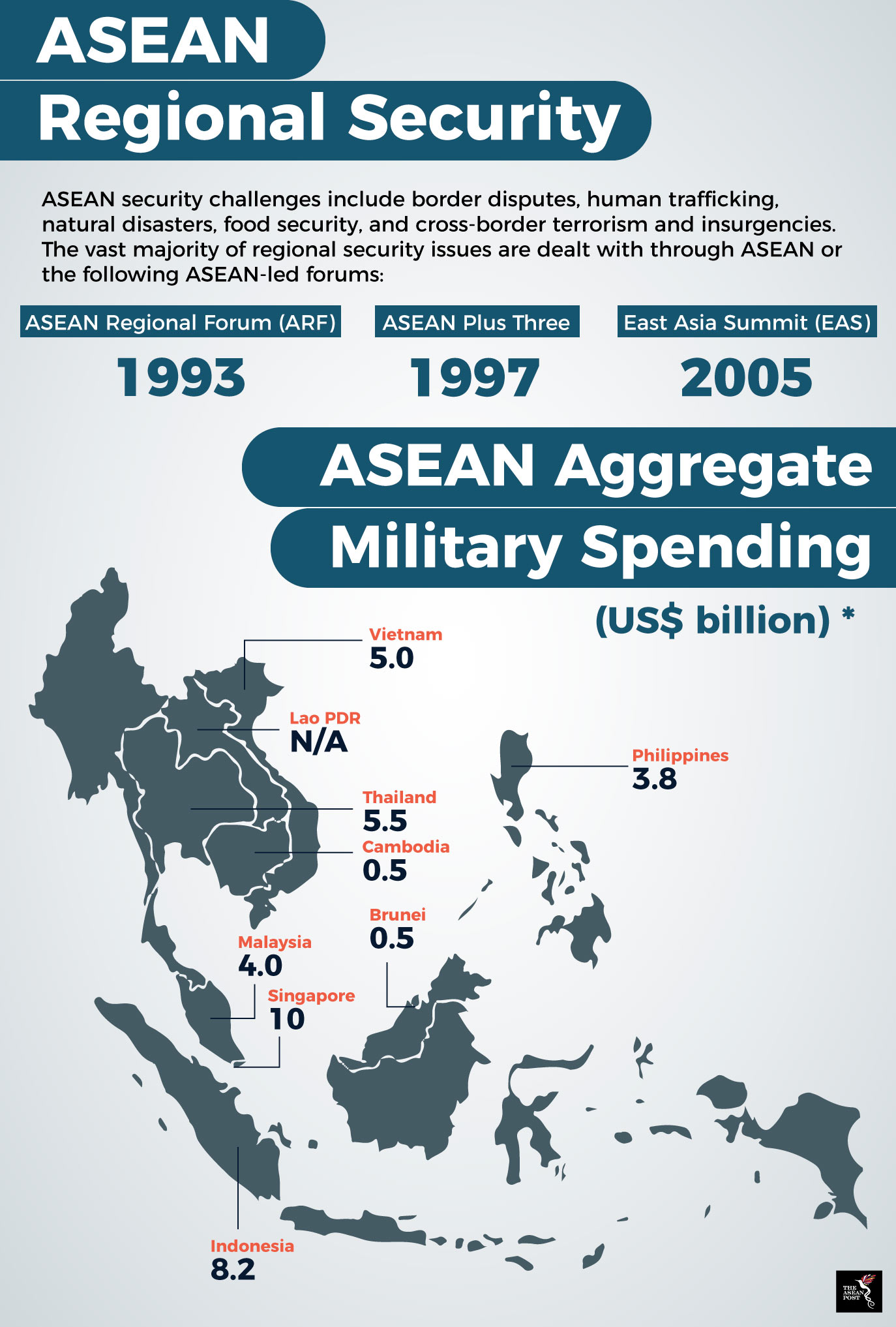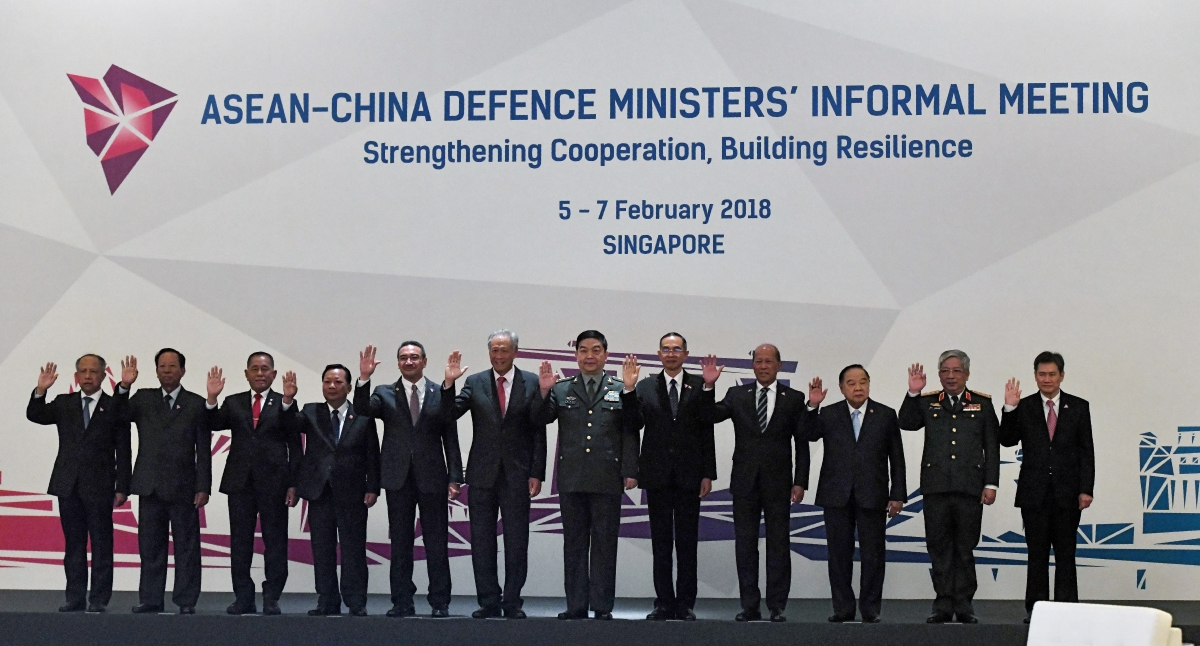Now more than ever, Southeast Asia has to be united on all fronts, with cooperation in defence and security a pivotal cog in the machinery that is ASEAN. Among the many concerns that have to be addressed are China’s persistent encroachment into the South China Sea, the creation of terrorist cells in the region, as well as the rise of cyber-attacks on ASEAN’s digital frontier. Although these apprehensions are not new, the threats to regional order from these worries are growing. With this in mind, agreements that have been ratified by ASEAN member states look to soothe this fear. The intent is to build a secure region that can defend itself from external forces as well as to mitigate possible domestic conflict.
Established 12 years ago, the ASEAN Defence Ministers’ Meeting (ADMM) is a crucial platform for dialogue on regional security concerns. The recently concluded meeting in Singapore highlighted the issue of terrorism and the potential grip that external forces have on the peoples of the region.
“Terrorism is a severe threat to ASEAN’s progress, prosperity, and very way of life,” a statement from the meeting read.
Besides combatting terrorism, the ADMM is also dedicated to improving the region’s capability to respond to chemical, biological, and radiological threats from terrorists and rogue states. A reaffirmation at the meeting to create a code for unplanned encounters in both, air and sea defence also took place.
The ASEAN Political-Security Community (APSC) is another example of the collaboration between member states in defence matters. The pledge within this framework relates to the settlement of intra-regional differences. It regards security as interlinked between member nations, bound by geographic location, a common vision, and objectives. Political development, the shaping and sharing of norms, conflict deterrence and resolution, post-conflict peace building, and the implementation of mechanisms are components within the APSC that are shared by Southeast Asian countries.

Source: Dan Steinbock, Research Director at the India, China, and America Institute (USA) and visiting fellow at the Shanghai Institutes for International Studies (China)
China’s influence in the region
Southeast Asia is also marred by the ongoing militarisation of regional conflicts, coupled with national strategic cultures that perceive military weakness as detrimental to national security. China’s involvement in the South China Sea, which encompasses the Scarborough Shoal and the Spratly Islands, is an example of a regional conflict that is still ongoing to this day.
The littoral countries of the South China Sea, (claimants include Malaysia and the Philippines), have committed huge portions of their military spending to upgrade their naval capacity. This initiative includes the expansion of maritime aviation, mobile anti-ship missile systems as well as maritime surveillance.
Despite the prevalence of diplomatic engagements, disagreements on security issues have an impact on ASEAN solidarity. Its most obvious challenge is finding a cohesive response to China’s increasing influence in the region. The internal relations of Southeast Asian countries are likely to be transformed by Beijing’s re-emergence as the major power in East Asia.
With the amorphous shadow that is China looming in the peripheries, it is understandable why defence spending is on the rise in the region. According to the East Asia Forum, the total defence spending of ASEAN states has doubled over the last 15 years in absolute terms, with countries like Indonesia and Thailand witnessing military expenditure growth rates of 10 percent on a year-by-year basis.
It is perhaps comforting to note that there has been a significant increase in joint military exercises in the region, with a focus on air and naval operations in maritime scenarios. Malaysia and the Philippines have a historical bilateral defense cooperation agreement that provides regular joint military exercises, military information exchanges, and the potential shared use of military facilities for maintenance and repair.
On the whole, ASEAN member states have to remain steadfast in defending the region they call home. A consistent and thorough engagement with one another is crucial as good communication could potentially deter any external threats. Also, governments across Southeast Asia ought to always be open to scrutiny from one another, which creates a necessary system of checks and balances with benefits beyond the domain of defence and security.
